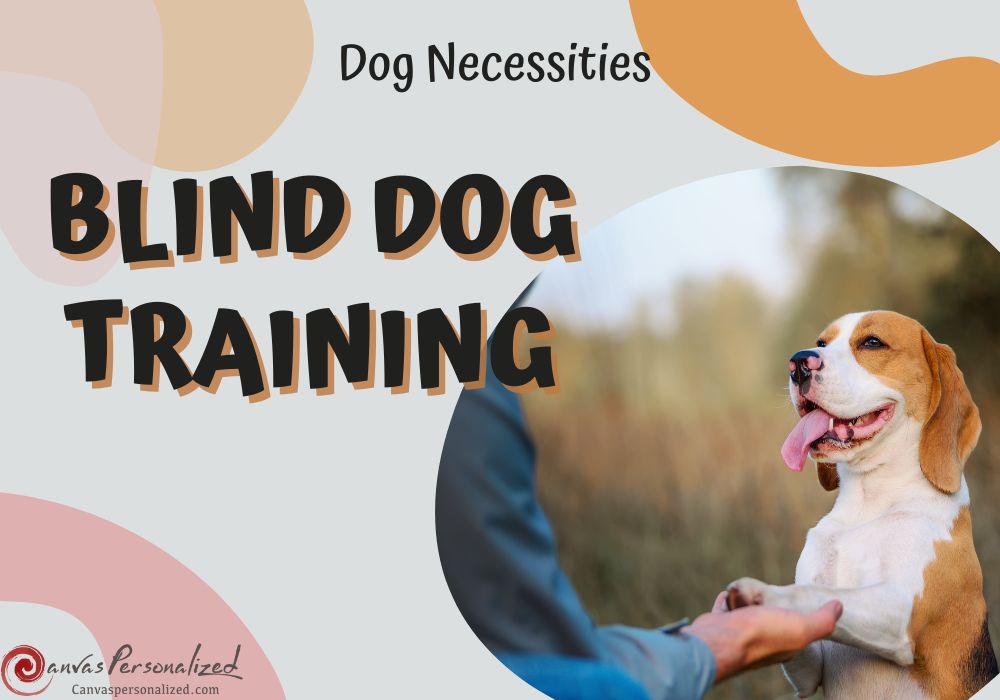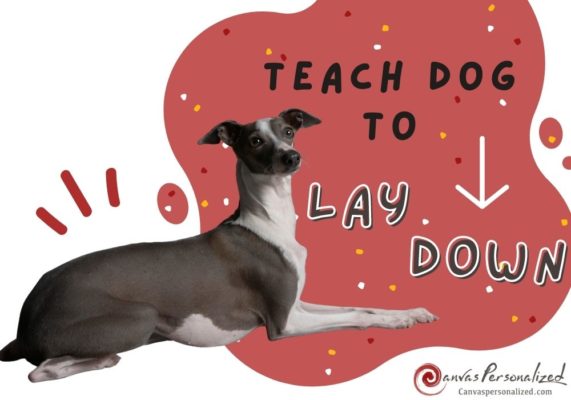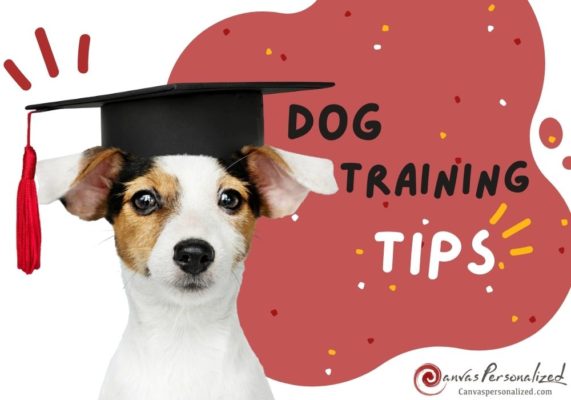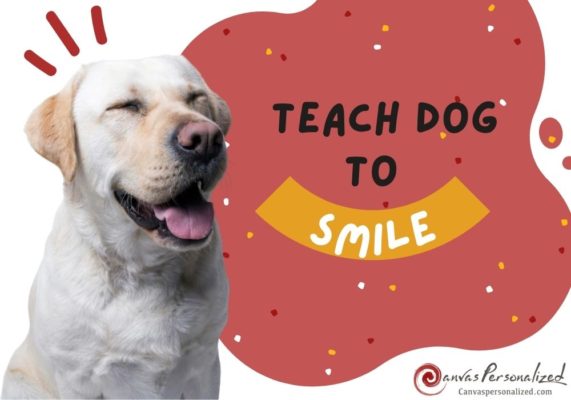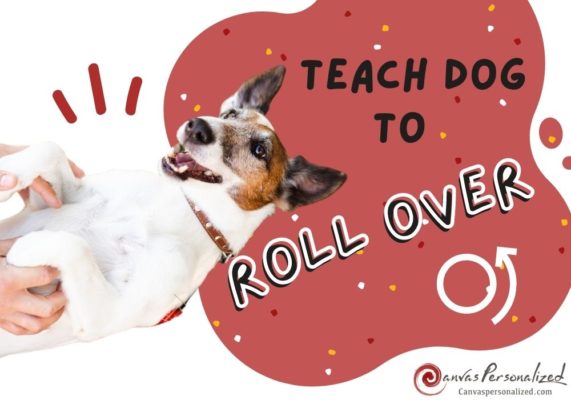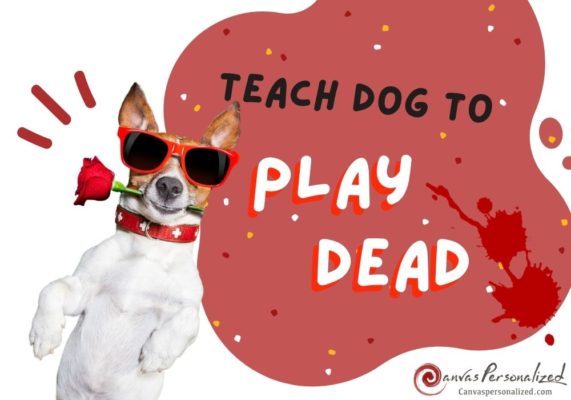Blind dog training may seem daunting, but patience and understanding can help your pup navigate the world safely and confidently. In this post from Canvas Personalized, we’ll go over the fundamentals of training techniques and give you some tips on how to make life easier for your four-legged friend.
Importance Of Blind Dog Training
Although blindness presents significant difficulties, it should not ruin a dog’s quality of life. The safety and well-being of the blind dog and their ability to participate in everyday activities depend on proper training. Learning how to train a blind dog is crucial for several reasons.
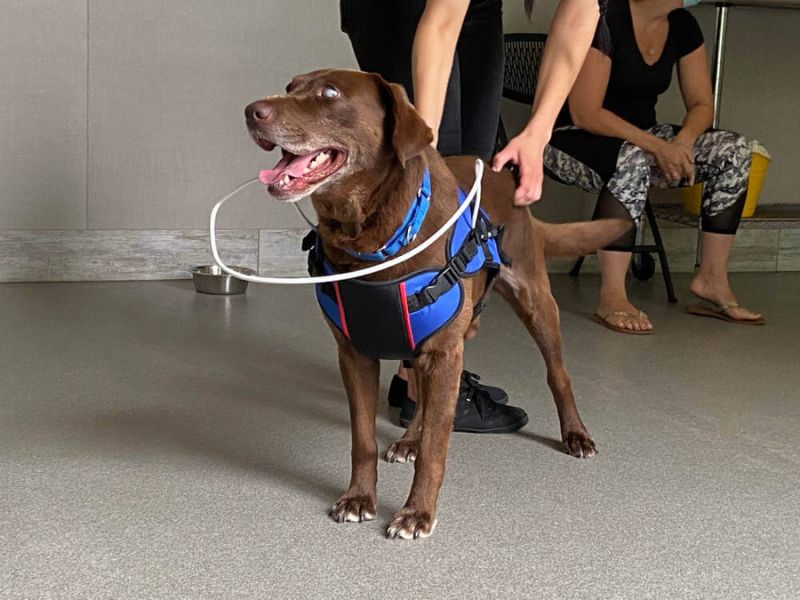
Safety: A blind dog needs to learn how to navigate their environment safely without bumping into objects or falling off stairs.
Self-Sufficiency: Blind dogs can lead happier, more fulfilled lives if taught to be more autonomous and capable of caring for themselves.
Socialization: Blind dogs still need to befriend other dogs and people, so training can help them develop good social abilities.
Confidence: Training can help the blind dog build confidence and trust in their owner, making them more comfortable and relaxed in their surroundings.
Turn your dog’s defects into training opportunities: Remember that your dog still possesses two helpful senses: hearing and scent. If a dog loses sight, it often develops heightened sensitivity in its other senses. The dog will learn faster and retain more information if you use a clicker during training.
Blind dog training can significantly improve the quality of life for the dog and its owner, but only if the trainer is patient, consistent, and creative.
Causes of Blindness in Dogs
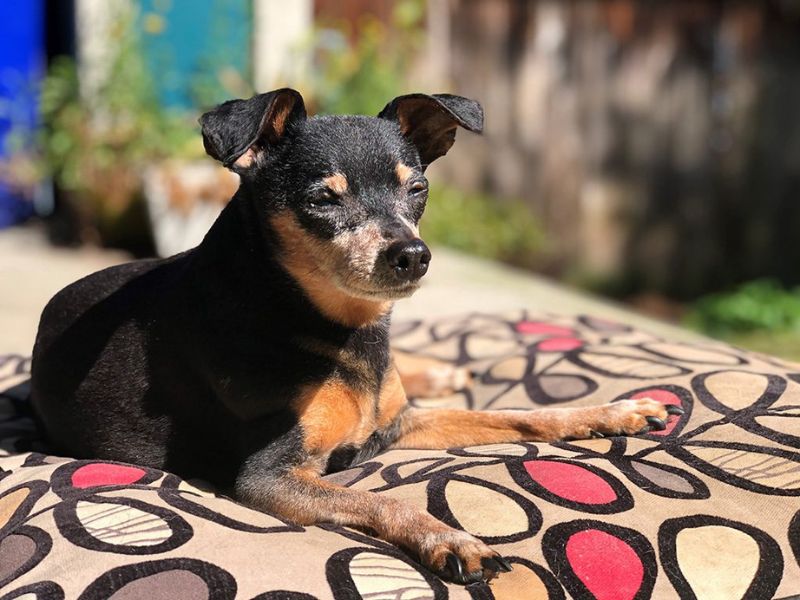
Several factors, including heredity, advancing age, and trauma, contribute to canine blindness.
Genetic causes: Some dog breeds are more likely to go blind due to genetic eye problems. Dogs of the Australian Cattle Dog, Border Collie, and Siberian Husky varieties fall under this category.
Age-related causes: Age-related conditions that can lead to blindness in dogs are similar to those that affect people. Cataracts, glaucoma, and retinal degeneration are all examples.
Traumatic causes: Blindness in dogs can have traumatic origins, such as when they sustain an eye injury. Punctures, scrapes, and head trauma are all examples of such damage.
It’s worth noting that these diseases can be prevented or slowed down if caught and treated early enough in dogs. Visiting the vet regularly will allow you to spot any issues mentioned above.
Different Training Methods for Blind Dogs
Blind dogs require special training to help them navigate their surroundings and live a happy and safe life. Here are some different training methods that can be used to train blind dogs:
1. Use of sound and scent cues
Blind dog training may benefit from using sound and scent cues. Scent cues can be introduced with specific aromas, such as essential oils, while sound cues can range from clapping your hands to a specific whistle or tone.
First, pick a particular noise or smell to trigger a certain response. When it’s time for your dog to eat or go outdoors, you might cue him by making a certain noise or scent. Then, pair the sound or fragrance cue with the action you want your dog to learn.
Using Bells
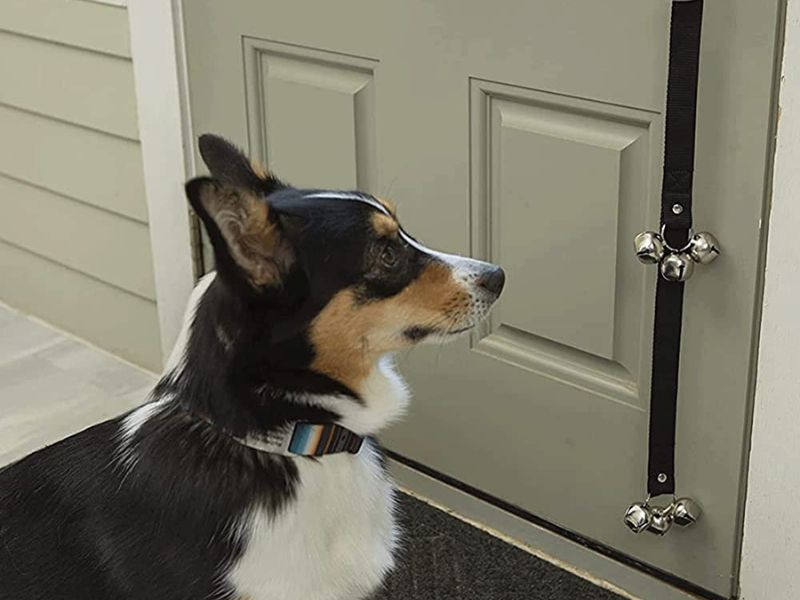
Until your dog learns to recognize the sounds of footfall and the vibrations caused by movement, you can help it by attaching small bells to your shoes or around your wrist to guide your dog to follow you.
If your dog has trouble navigating the house, hanging a wind chime or bell outside the back door would be best.
>>>Get more helpful tips on bell training for dogs!
Talk to your dog
To avoid frightening or startling your dog, you should talk with it more than usual and get its attention before petting it.
Moreover, you can teach your dog some basic cues like “step up,” “left,” “right,” “danger,” and “stop” so he can move around your home and yard without getting into trouble.
Use essential oils to mark locations

Use dog-safe, pure essential oils to move your pet from room to room. For example, a couple of drops of pure vanilla in the kitchen, lavender in the bedroom, jasmine in the living room, etc.
The scents will help your dog locate its dog bed or sleeping space, the door to the backyard, the water bowl, and other essentials.
Note: You should avoid using any essential oils that could be toxic to them. You should reapply it every few weeks.
Potty Training A Blind Puppy

Give verbal cues: Use consistent verbal cues such as “go potty” to help your puppy understand what is expected of them.
Use scent markers: Use a strongly scented urine marking spray or a scent like vinegar to mark the spot where you want your puppy to potty. This will help your puppy identify the right spot.
Your dog will eventually learn to respond to the cue (the sound or smell) whenever you want it to perform the desired action. Your dog may take time to understand and respond to your sound and scent cues, so be patient and consistent.
2. Lure training
Lure training is a form of positive reinforcement in which a reward or toy is used to coax a dog into doing what it wants. To communicate with and lead a blind dog through training, it is helpful to use food or toys.
Choosing a high-value treat or toy that the dog appreciates and can easily follow with its sense of smell is the first step in lure training a blind dog.
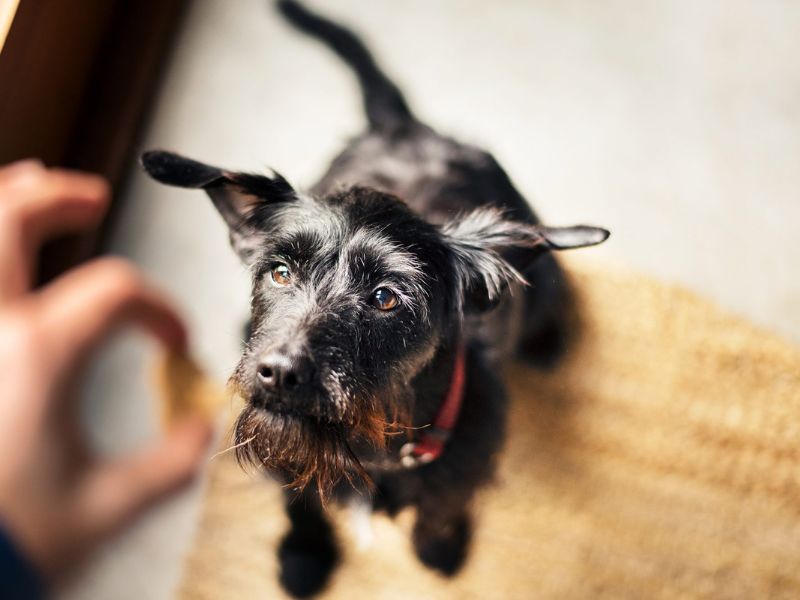
For example, to teach a dog to sit, you would place a treat or toy in front of its nose and raise it gently over its head. After the dog has achieved the proper position, you can praise and give the animal the treat or toy.
Your puppy can learn various commands and skills, including sit, stay, and come, as well as agility training through lure training. The trainer-dog link can be strengthened using this strategy, which is both effective and positive.
3. Clicker training
Training a blind dog using a clicker is highly efficient for non-sighted animals. All you need is some goodies, time, and a clicker to try clicker training with your blind dog.
To begin, introduce the clicker by allowing the dog to sniff and investigate it. When your puppy starts to pay attention, use the clicker and reward it immediately. The dog must be trained repeatedly to associate the click with the treat.
Once the dog has learned to associate the click with a treat, you can introduce a command like “sit” or “down.” Click the clicker and reward the dog when it obeys your command.
Remember to keep training sessions brief and enjoyable for your blind dog, and always remember to employ positive reinforcement tactics.
Clicker training calls for persistence and tolerance. A blind dog’s learning curve may be steeper, so be patient with it and acknowledge its efforts at succeeding.
4. Toys with noise and scent
Relying on the senses of hearing and scent once more is essential to learn how to train a blind dog. Toys with sound and scent can be effective tools for training blind dogs. Here are the instructions for using them:
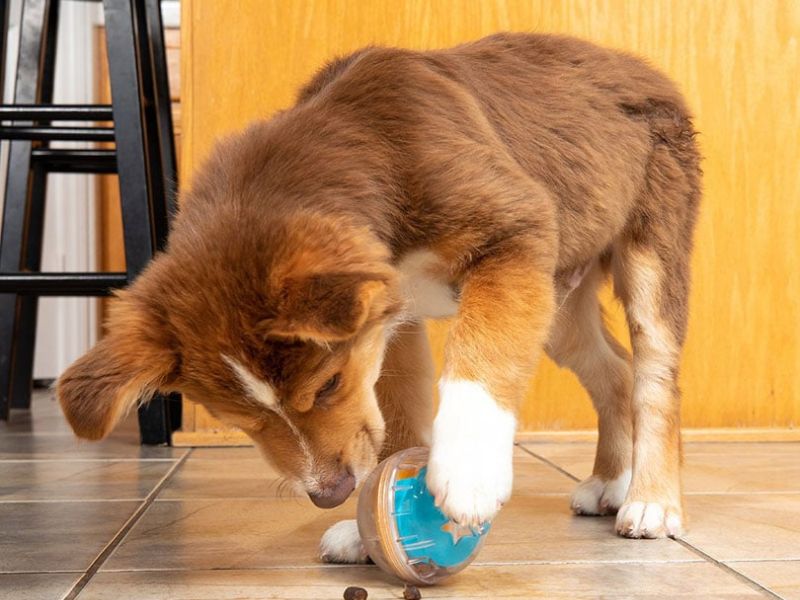
Select noisy and strongly scented toys for your blind dog to play with. Toys that make noise or contain tasty snacks are always welcome additions. Introduce the toys to your dog by letting it sniff and examine them.
Once your dog gets familiar with the toy, you can make noise by squeezing it or tapping it on the floor. Give your dog a treat or high-fives after the toy makes a noise. Repeat until he or she learns to associate the noise with something good.
Always watch your dog while playing or training, and choose safe toys suited to their size and breed.
5. Mapping or guiding
Training a blind dog to navigate its environment by touch and scent is called “mapping” or “guiding.” Carpet runners are useful in high-traffic areas of the home. They may utilize their sense of touch to navigate and find their way around obstacles.
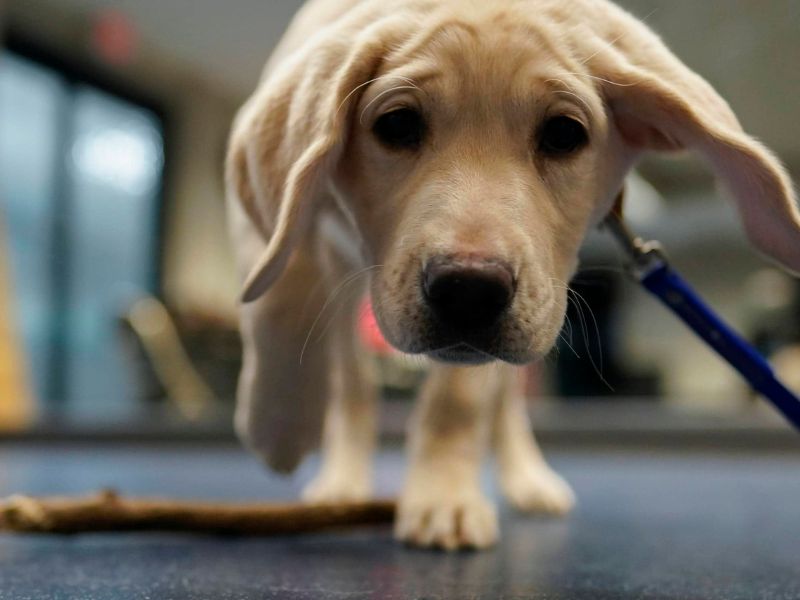
Train your blind dog with the use of mapping or leading, which entails the following steps:
Pick out a familiar and secure place for your blind dog. Make a trail of objects or odors for your dog to follow. Lead your dog along the route or map to familiarize them with it.
Let your dog explore the area independently by following the scent markers or objects with its nose and sense of touch. To help your dog feel more confident in his navigational abilities, it is best to repeat the training session numerous times.
6. Startle training
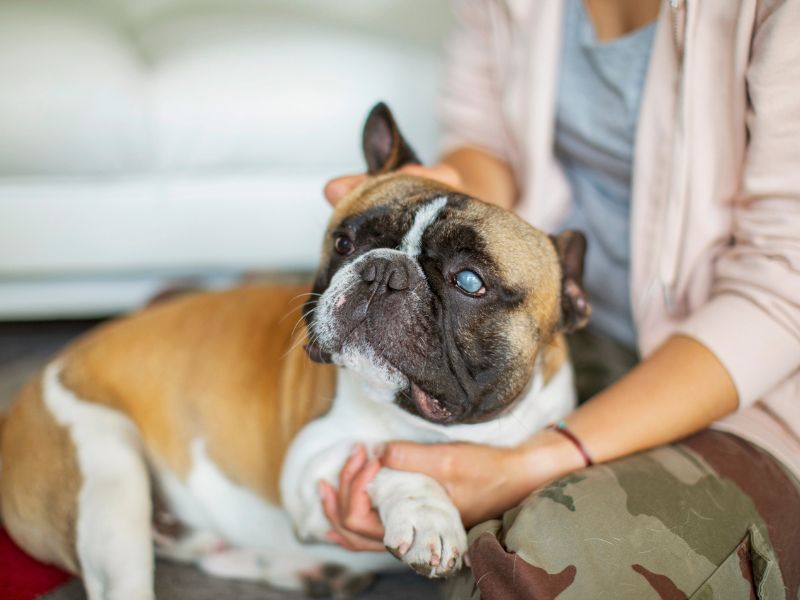
It is important to note that startle training should only be done by a professional dog trainer who has experience with blind dogs. When startle training a blind dog, the dog is conditioned to respond positively to an unexpected noise or movement and then rewarded.
To surprise the dog, the trainer will make a loud noise or perform a jarring action, such as clapping their hands or stamping their foot on the floor. The trainer will give the dog a treat or some words of praise as soon as the dog stops moving and starts doing what they want.
The aim is to give the dogs just enough of a jolt to grab their attention and motivate them to perform the necessary action without scaring them.
How To Train A Blind Dog To Navigate With Basic Cues
A command is a great technique to let your dog know that you are about to change pace, direction, or the presence of another dog or person. Since your dog won’t be able to see your hand gestures or hear your voice, each command must be unique in appearance and tone.
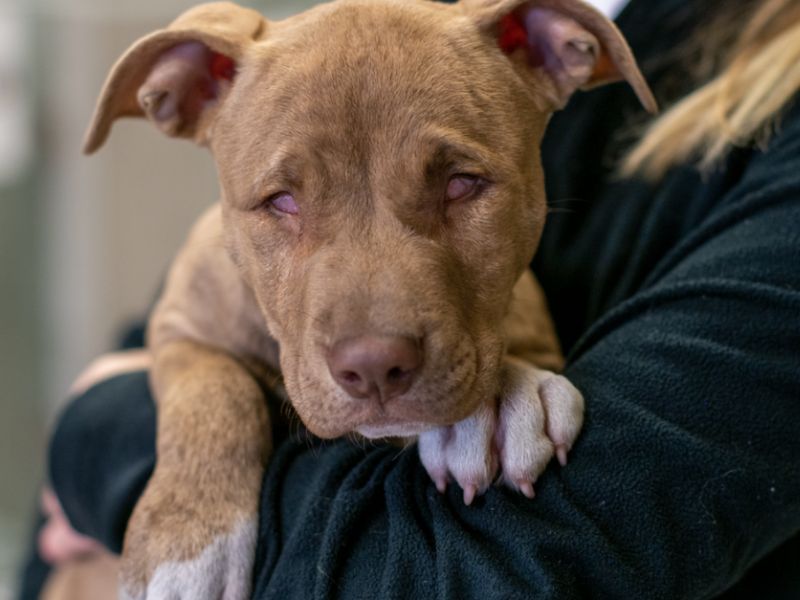
| Wait | Stop walking and ask your dog with the “WAIT” command. Stop what you’re doing and wait for your dog to do the same. Give the ‘walk on’ order when you’re ready to continue, and praise them for their efforts. |
| Walk on | Before walking, give the command “go on” or “step on.” Then lead your dog gently while praising it. |
| Hup | Say ‘hup’ as you step up or a curb and step ahead of your dog. |
| Step | Say’step’ when approaching a step-down or curb, and step down before your dog does. |
| This way/ Thay way | To make a right turn, give the command “this way.” To make a left turn, say that way. |
| Call its name | A blind dog can be taught its name to find its way to you. Give your dog a treat and call his name. Repeat this process multiple times until your dog responds enthusiastically to the sound of his name. |
| Come | Like the dog in the Name Game example above, you can train them to come when you blow a whistle or use the word “come” as the signal. |
| Sit | To ask your blind dog to sit, repeat the preceding procedures, add the command “Sit,” and reward it. |
| Down/ Lie down | Get your pet to sit. Next, hold a small treat before your dog’s nose and slowly lower it between your dog’s front paws until it licks or sniffs it. Simply click and give your dog a treat! |
Safety Tips for Training A Blind Dog
It’s important to take extra precautions when training a blind dog because it requires special attention to safety.
Choose a safe and small space: Beginning training in a safe and familiar setting, such as your home or backyard, is vital when working with a blind dog.
Use a secure leash and harness: Keep your blind dog safe by always using a leash and harness to keep it from running away or getting hurt.
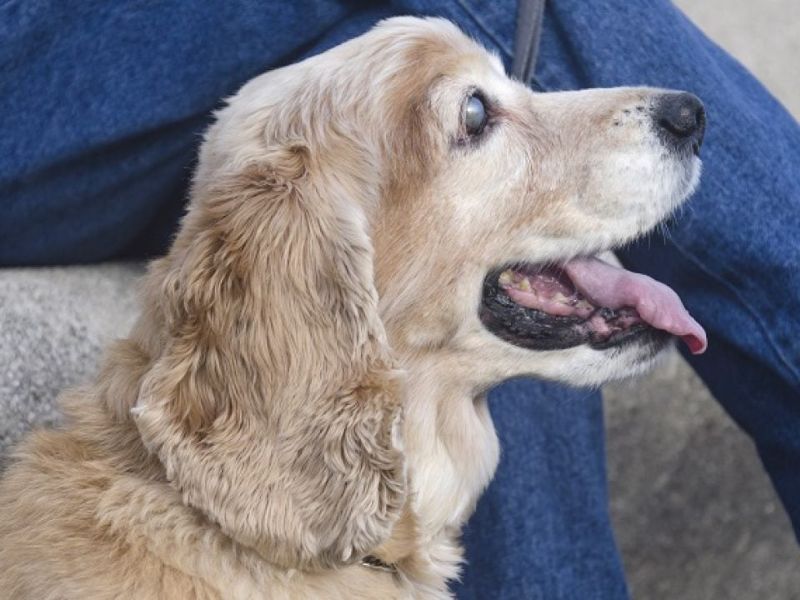
Avoid dangerous or unfamiliar areas: Don’t take your blind dog to places it has never been before, such as a busy intersection or a construction zone, where it may be in danger if it doesn’t know its way around.
Using positive reinforcement: Avoid using negative reinforcement such as punishment and instead use positive reinforcement such as treats, praise, or affection.
Be patient and consistent. It will take time and consistency to train a blind dog. Maintain uniformity in your dog’s training methods and signals, and don’t overstimulate him.
Keep a tight eye on your dog at all times, but especially while you’re outside or in an unknown area.
>>>Keep reading:
- How To Calm Down A Dog: 19 Effective Ways & Tips Must-Try
- 5 Easily Steps For Crate Training For Dogs You Should Know
Positive reinforcement, consistency, and patience are essential during blind dog training. You can teach your dog to confidently explore the world by creating a safe and secure environment and using tools like scent cues, tactile markers, and other helpful tips from Canvas Personalized. Your blind dog can live a happy and fulfilled life with your love, care, and training.


